Marine Mammals
Marine mammals are aquatic mammals that rely on marine ecosystems for survival. They include seals, whales, sea otters and sea lions. Marine mammals are found in different marine ecosystems all across the globe. They are an extremely diverse group of animals, each with their own unique adaptations to life in the marine world. Marine mammals have to contend with the extreme temperatures, depths, pressure, and darkness of the ocean. There are four main groups of marine mammals: cetaceans (whales and dolphins), pinnipeds (seals and sea lions), sirenians (manatees and dugongs), and marine fissipeds (sea otters).
Marine mammals play a crucial role in marine systems, particularly in prey regulation. Their relatively small numbers but large ecological impact makes them an important group to protect. One third of all marine mammal species are currently threatened, and 72 species are listed on the IUCN Red List as critically endangered.
The waters off Vancouver Island are home to an incredible array of life, including many species of marine mammals. There are twenty-five species of cetaceans, five species of pinnipeds and two species of fissipeds known to inhabit our waters. Of the thirty two species, six are considered endangered, five are threatened, and five more are of special concern.
Pinnipeds
Pinnipeds are a group of marine mammals which spend their lives in both the ocean and on land. This group is mainly composed of seals, but also includes sea lions and walruses. Pinnipeds are fin-footed, allowing them to swim efficiently, but they also perform some activities on land, such as mating. The most common species of pinnipeds in British Columbia are Harbour seals (Phoca vitulina) and Steller Sea Lions (Eumetopias jubatus). Steller Sea Lions are currently listed as a species of special concern, due to very restricted breading locations. Entanglement, oil spills, and environmental contaminants can pose threats to all pinniped species.
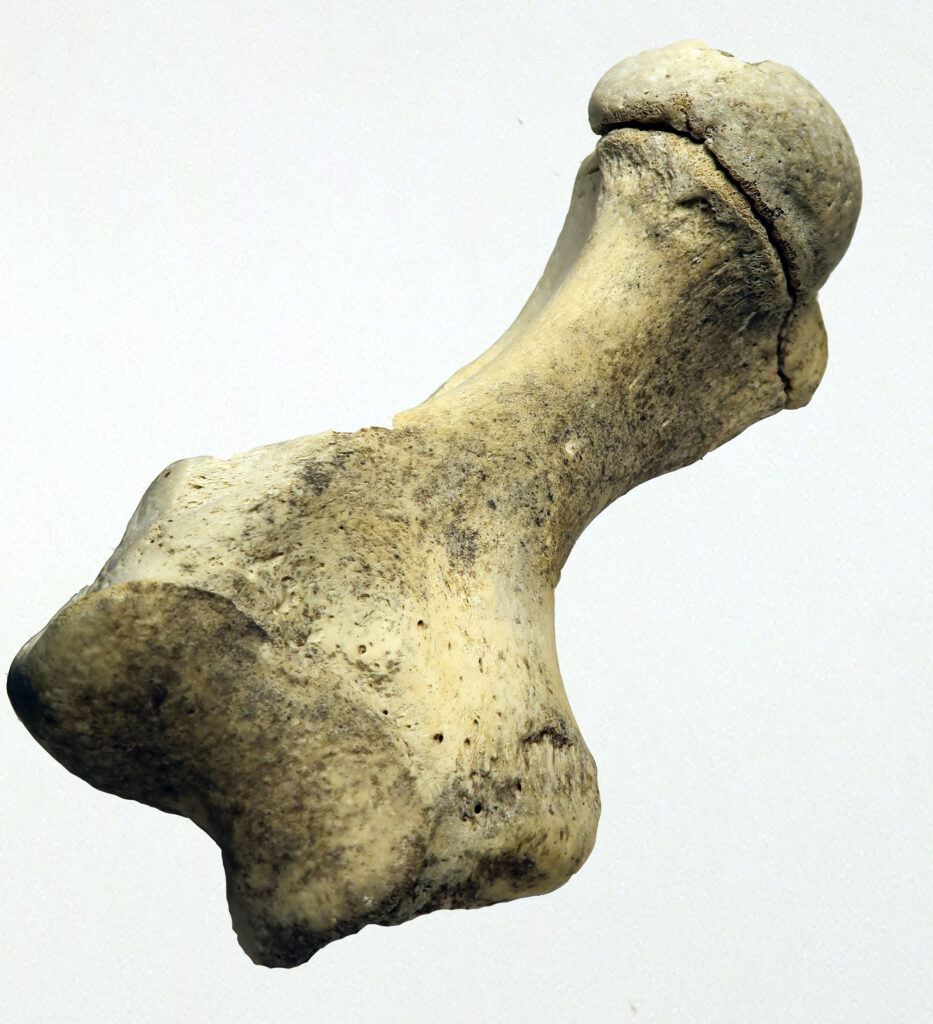
Sea Lion Humerus
The humerus is an extremely thick bone which lends power to the back flipper.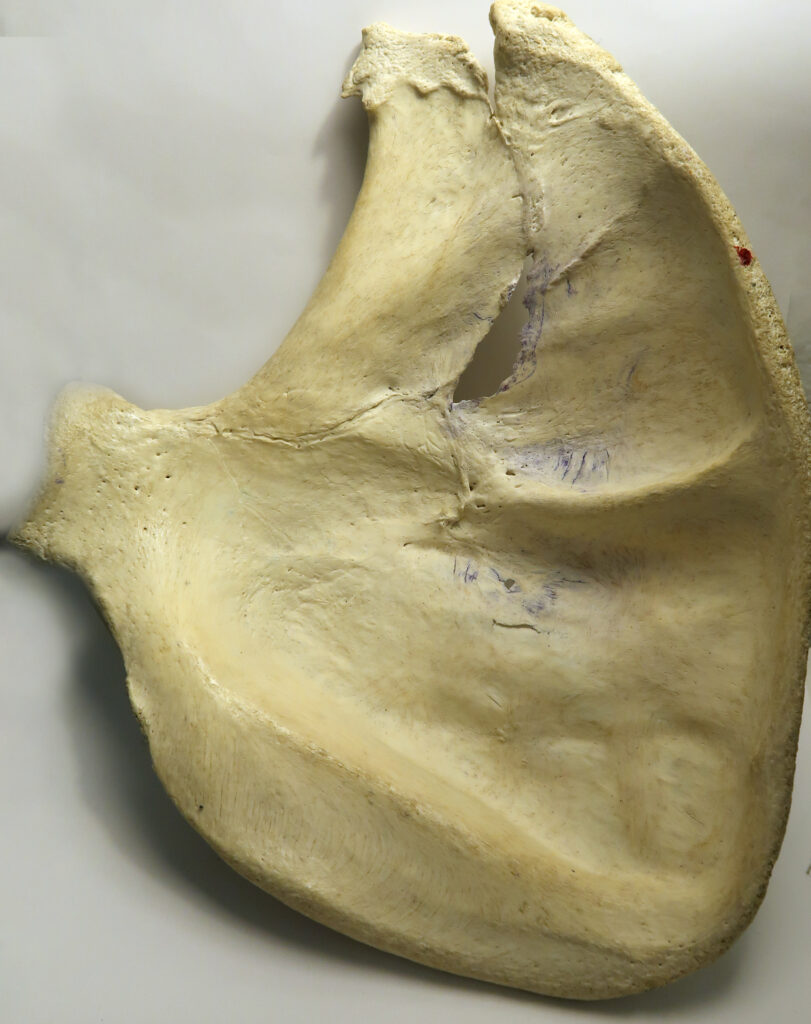
Sea Lion Scapula
The scapula, or shoulder blade, is an important part of sea lion locomotion. Sea lions can reach swimming speeds of 20 mph.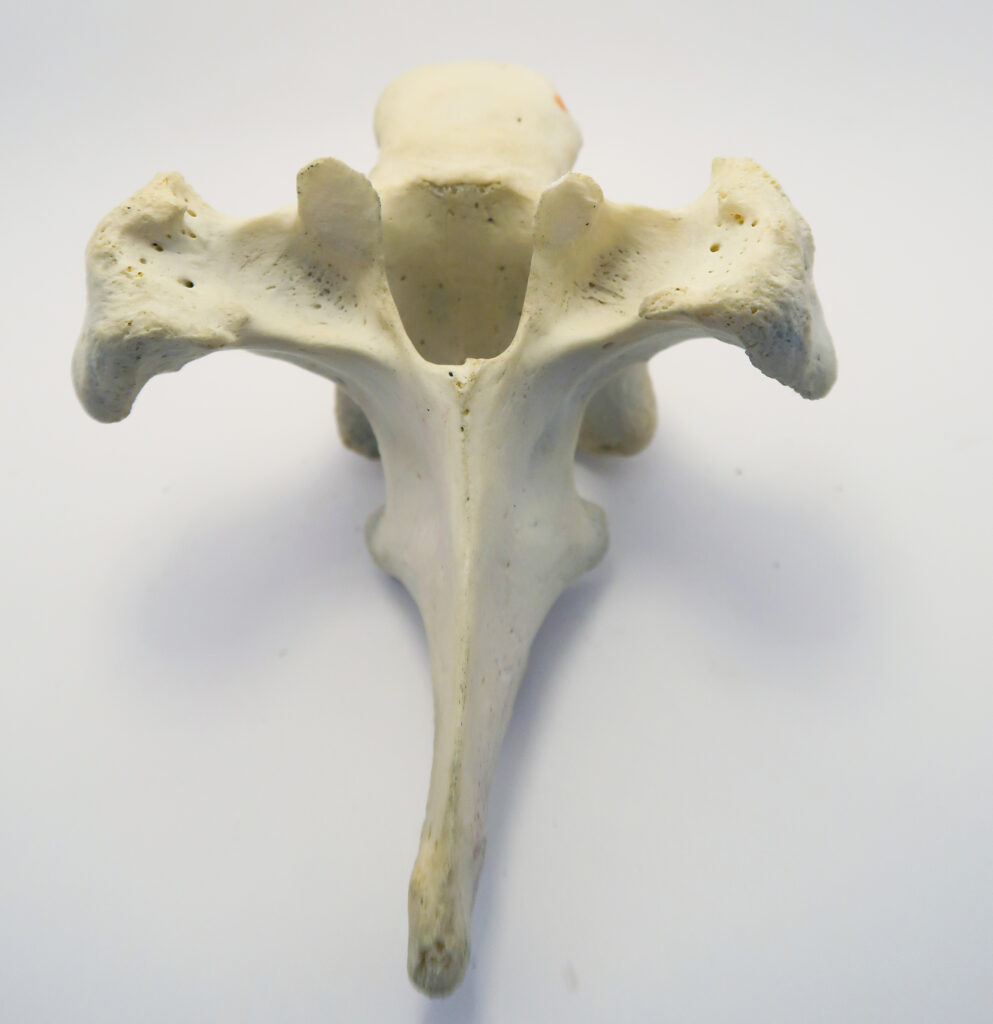
Harbour Seal Vertebra
Harbour seals can grow up to two meters long, with 39 vertebrae.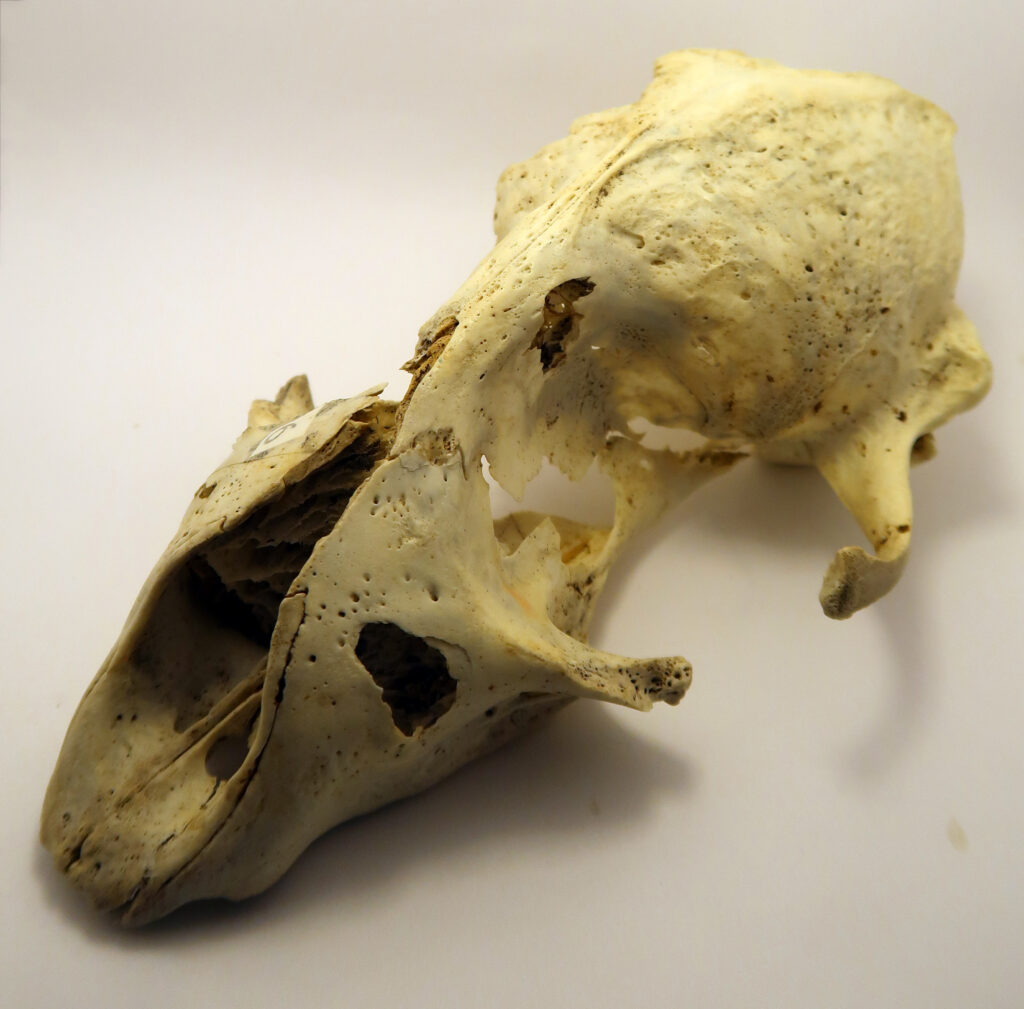
Harbour Seal Skull
Harbour seals have a robust head with a very broad snout. They also lack external ear flaps. They have very large eyes to help them see in dark water.
Check out the Canadian Wildlife Foundation for more information.
Cetaceans
Cetaceans are group of completely aquatic mammals. They are the most highly specialized mammalian swimmers; some are capable of reaching speeds of 25 mph underwater. Some cetaceans can dive to depths of over 10,000 feet, and remain submerged for two hours. Cetaceans have streamlined bodies, extremely smooth skin, and well-developed tails with a horizontal fluke (tail fin) for propulsion. All cetaceans breathe through nostrils on the top of their head called blowholes. The two main groups of cetaceans are baleen whales and toothed whales. Baleen whales, including humpback whales and grey whales, are filter feeders. They use large baleen plates to catch zooplankton and small fish. Toothed whales, including orcas and porpoises, are more traditional predators. They have a number of conical/spade shaped teeth. They uses their teeth to grasp and tear their prey, which is primarily fish, squid, and other marine mammals.

Baleen Whale Vertebra
A lower vertebra from a large baleen whale. Vertebrae of large whales are often the same shape and size as a dinner plate.
Whale Baleen
Baleen plates range in color from black to yellow or white, depending on the species.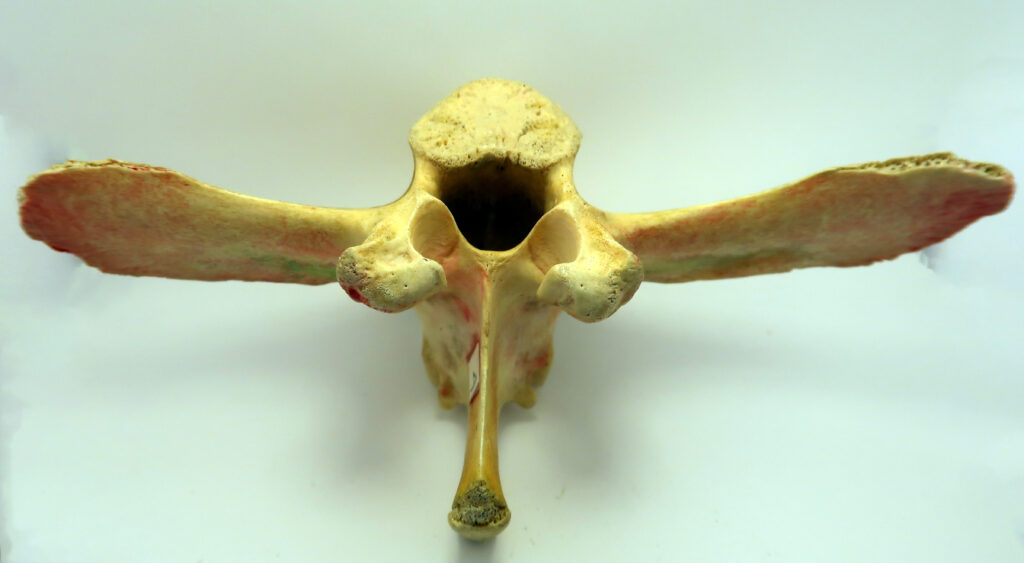
Porpoise Vertebra
Porpoises have fused neck vertebrae, which increases stability when swimming at high speeds. This does decrease flexibility, making it impossible for them to turn their heads.
For more information check out Sea Grant.


